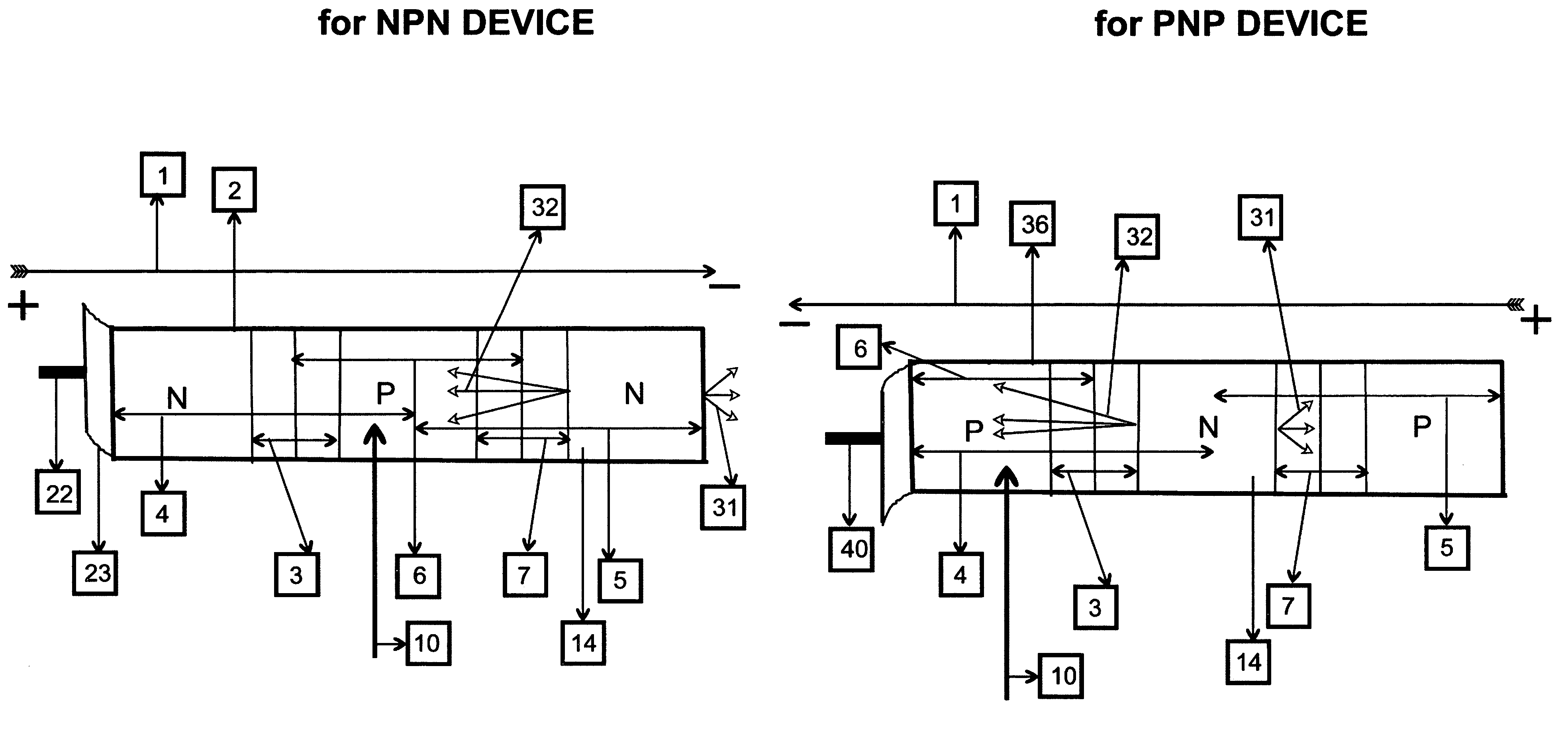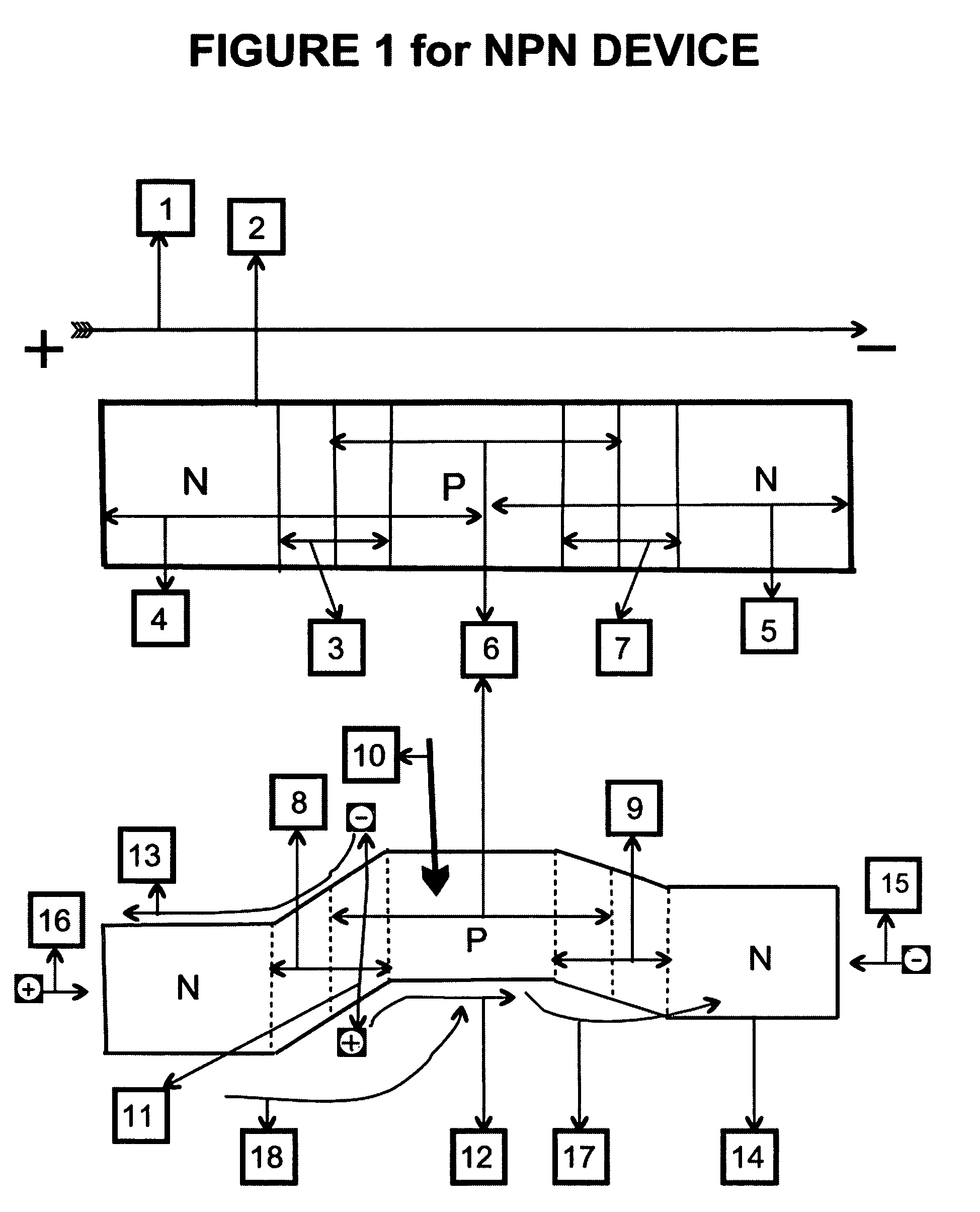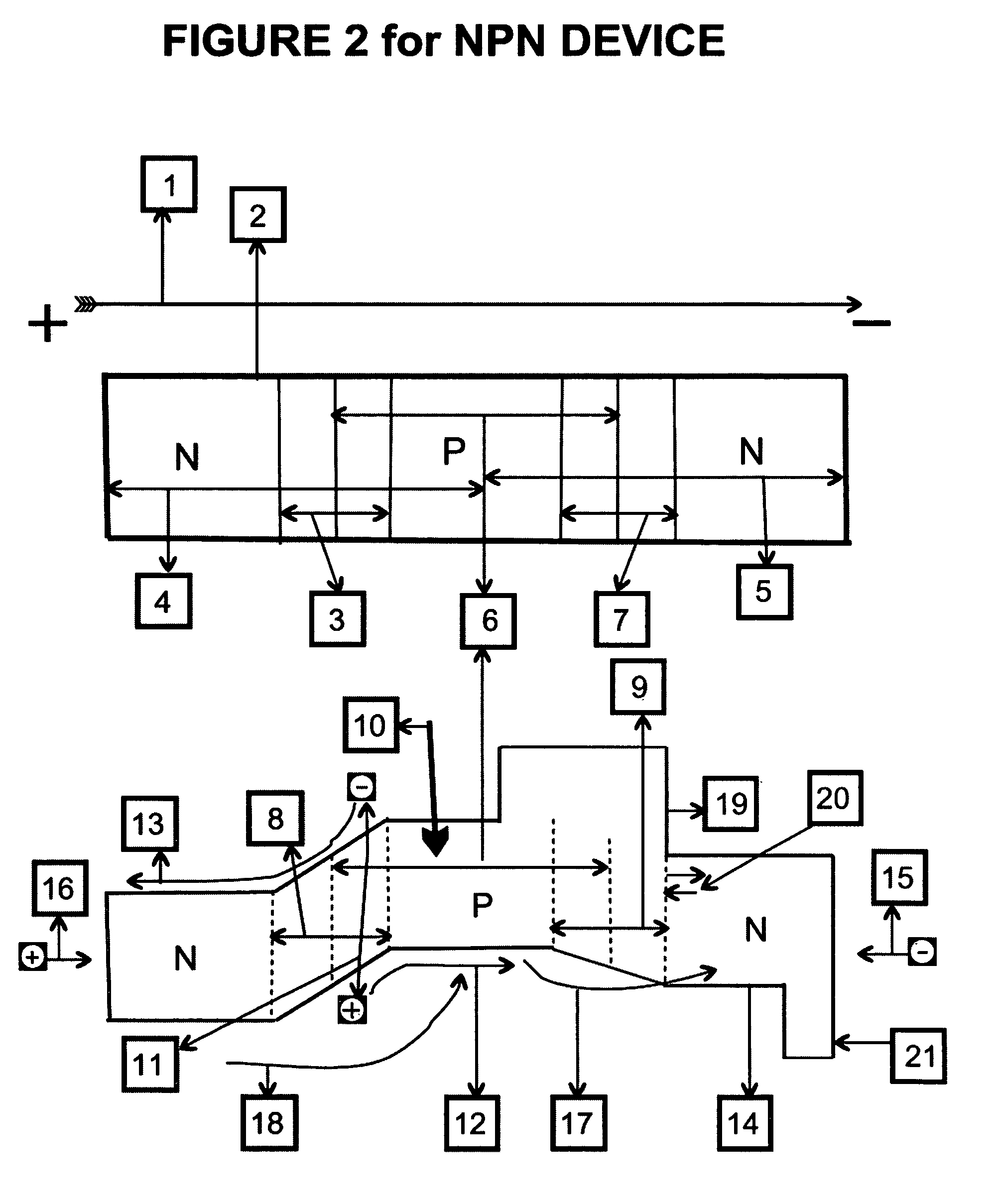Laser addressed monolithic display
a monolithic display and laser technology, applied in lasers, color televisions, solid-state devices, etc., can solve the problems of affecting the dissipation speed of the reverse bias region and the rapid trapping of the electron arriving from the reverse bias region
- Summary
- Abstract
- Description
- Claims
- Application Information
AI Technical Summary
Benefits of technology
Problems solved by technology
Method used
Image
Examples
Embodiment Construction
[0031]To facilitate description any numeral identifying an element in one figure will represent the same element in any other figure.
[0032]FIG. 20 and FIG. 21 represent the functioning of the proposed display screen 34. Light is emitted 49 from the screen 34 only from the area illuminated by the laser. This area performs as a photo-amplifying and light-emitting device 48 or 50 as will be described in detail in the following. As the light emission occurs only from a restricted area, at a certain time this creates the equivalent of an addressed pixel. By scanning the LASER 10 across the screen 34, we can generate and address all pixels on the screen.
[0033]In case of a first embodiment, with reference to FIG. 1 and FIG. 12, we have NPN and PNP photo-amplifying and light-emitting devices respectively. Both devices use negatively charged electrons and positively charged holes as carriers of current. Both devices in FIG. 1 and FIG. 12 have an external electric field 1 across it and in thi...
PUM
 Login to View More
Login to View More Abstract
Description
Claims
Application Information
 Login to View More
Login to View More - R&D
- Intellectual Property
- Life Sciences
- Materials
- Tech Scout
- Unparalleled Data Quality
- Higher Quality Content
- 60% Fewer Hallucinations
Browse by: Latest US Patents, China's latest patents, Technical Efficacy Thesaurus, Application Domain, Technology Topic, Popular Technical Reports.
© 2025 PatSnap. All rights reserved.Legal|Privacy policy|Modern Slavery Act Transparency Statement|Sitemap|About US| Contact US: help@patsnap.com



